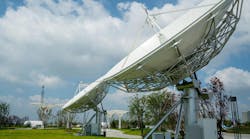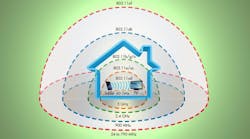The first Advanced Television Standards Committee (ATSC) standard for over-the-air (OTA) digital television broadcast (ATSC 1.0) was approved by the FCC in 1996. That was seven years after the World Wide Web was created, when only 0.04% of the world’s population had internet access and cellular technology was in its second generation. It’s obviously time for a change, and the new ATSC 3.0 provides just that—and then some. In fact, ATSC 3.0 is so much more advanced and comprehensive than its predecessor, it effectively makes OTA a true competitor to cable, fiber, satellite, and internet streaming for the first time.
With the vast majority of people receiving programming via cable, fiber, or subscription video-on-demand (SVOD) services like Netflix, Amazon, and Hulu, OTA probably seems archaic. However, the usage of OTA has actually increased about 4% per year in the last two years, mostly the result of cord-cutters supplementing their SVOD service with local content. The remainder of OTA users are mostly either people who cannot afford broadband or cable, are happy with they get over the air, or simply don’t watch TV. ATSC 3.0 should increase penetration even further, as it has some unique benefits.








